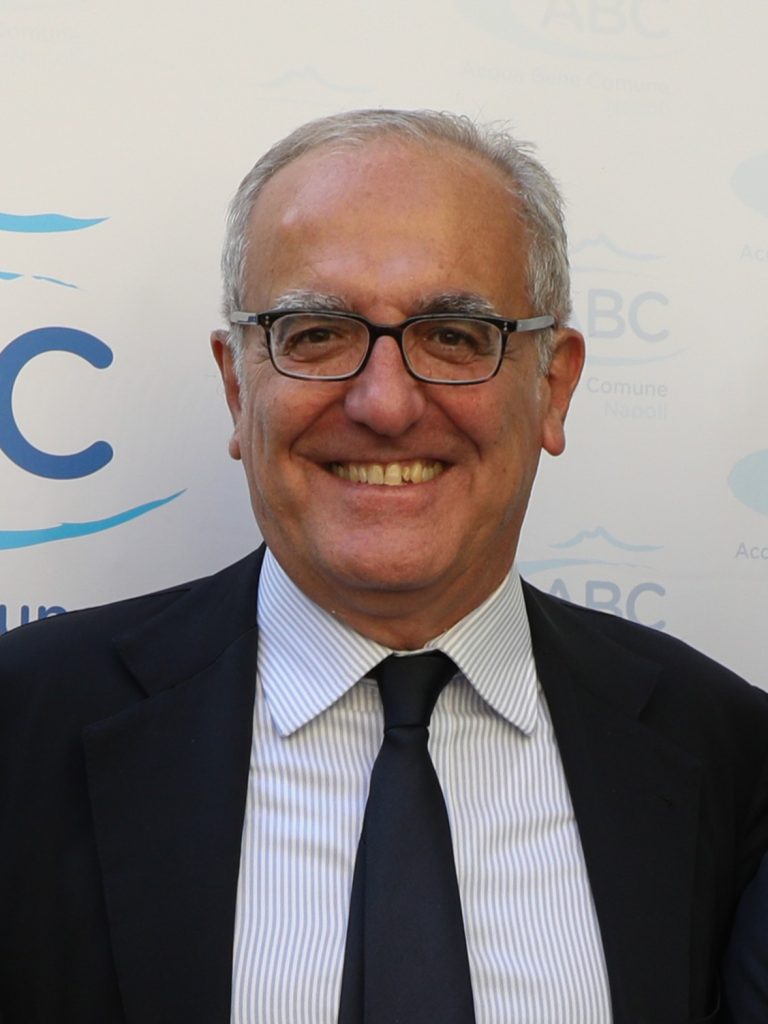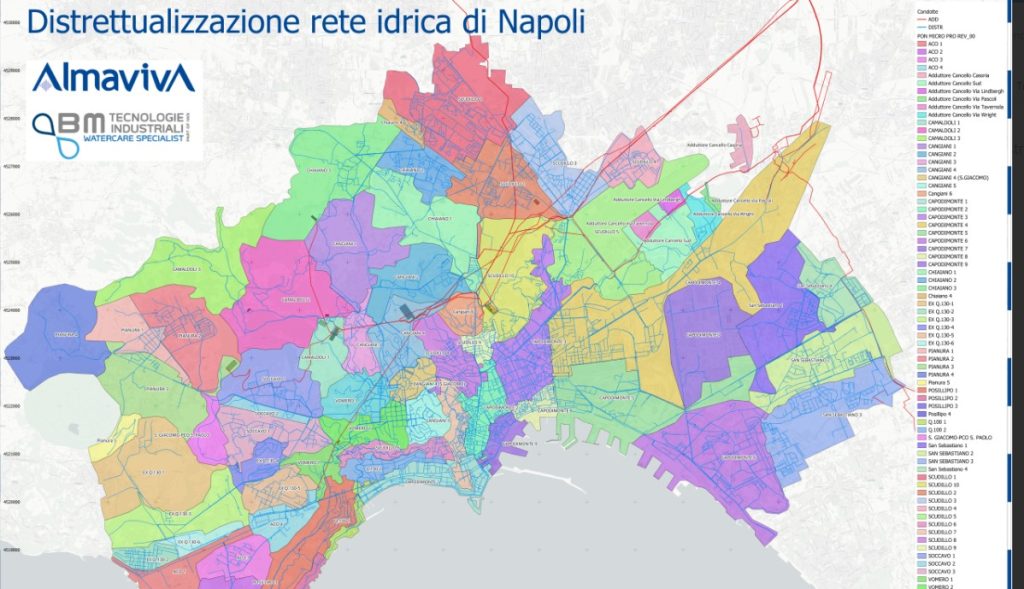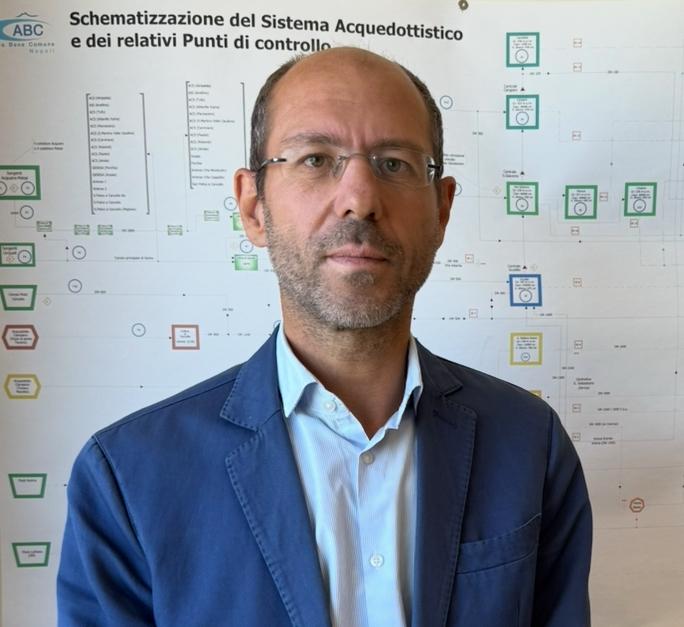In the ancient city of Naples, Italy, the drinking water supply runs through pipes that trace the contours of its history. The hilly landscape and age of the infrastructure make it a challenging environment for ABC Napoli, the public water utility responsible for delivering clean water to nearly a million residents.
Now, in partnership with Italian digital services group Almaviva, ABC Napoli is digitally upgrading one of Europe’s oldest water networks into one of its smartest.
The €7 million project, financed through the EU’s REACT-EU initiative, has introduced a Smart Water Management System that combines real-time data from thousands of sensors with advanced modelling and simulation tools.
The goal is to detect and reduce water leaks, optimise energy use, and modernise the management of the city’s intricate hydraulic infrastructure.
“This is a very important project for us, and of course for ABC Napoli as well,” says Fulvio Conti, Head of Water, Environment and Agriculture Practice at Almaviva.
A network with a century of history
ABC Napoli provides drinking water for the entire Neapolitan population. The network serves more than 215,000 users. Managing it, though, is not simple.
“Naples is a very complicated city,” explains ABC general manager Sergio De Marco.

“Part of it lies at sea level, while the upper neighbourhoods reach up to 500 metres above. We have nine large reservoirs feeding the network at different altitudes, so the main challenge is to manage pressure across the system.”
Previously, the city’s network was divided into just 12 pressure zones. That meant some areas experienced excessive pressure, while others struggled to maintain supply. The new system aims to divide the city into 70 district metering areas, each with its own pressure regulation and monitoring.

“With the water management system, we can now reduce and manage pressure to keep it at the correct level,” says De Marco. “That not only reduces leakages but saves a lot of energy by optimising pump operations.”
Building a digital twin of Naples’ water network
At the centre of the modernisation effort is a digital twin, a virtual replica of the city’s entire water infrastructure, built on a Geographic Information System (GIS) and fed by real-time Internet of Things (IoT) data from the field.
“The GIS provides the foundation,” says Conti. “It connects all systems, models and data by assigning them a geo-spatial context. That allows us to create a holistic, digital representation of how the network behaves in real time.”

IoT sensors installed across the city collect data on water flow, pressure and quality, while field surveys and network modelling tools ensure the system’s accuracy.
The information is transmitted to a central data lake and displayed in a control room through Almaviva’s Smart Monitor platform — a “single view cockpit” that lets operators visualise, prioritise and manage operations.
The digital twin is constantly updated, says Gianluca Sorgenti, Chief Innovation Officer at ABC Napoli. It can see how the infrastructure is functioning at any point, simulate the behaviour of plants or networks hours or days ahead, and even test management scenarios before applying them to the real system.
From ancient expertise to modern intelligence
It’s been more than 2,000 years since the first Roman aqueducts were built in Naples. Now, that accumulated hydraulic knowledge is being augmented by artificial intelligence and real-time data.
The Smart Water Management System links every layer of the city’s water infrastructure. The GIS serves as the master data hub, while a Geo Engine enables hydraulic modelling and real-time simulation of water flows, and Workforce and Asset Management tools coordinate field operations and maintenance planning.
These are tied together through an Enterprise Integration Layer that ensures governance, interoperability and real-time synchronisation across all systems.
This interconnected ecosystem allows ABC Napoli to monitor infrastructure performance, optimise maintenance schedules and make data-driven investment decisions.
“It’s not just about having data,” says Conti. “It’s about turning that data into actionable insight — helping operators see what’s happening, predict what will happen and decide what to do next.”
Fighting leakage, supporting sustainability
Reducing water leakage is one of the project’s key objectives — and one of the city’s most urgent priorities. Across Europe, water utilities lose an estimated average of 25% of treated water before it reaches consumers; in older cities like Naples, the figure can be even higher.
“The main aim of this project is to mitigate and reduce water leakage,” says Conti. “It’s essential not only for economic reasons but also for environmental ones. Reducing waste supports the ecological transition and aligns with new sustainability regulations.”
With some 80,000 smart meters installed across the network, ABC can now calculate precise hydraulic balances for each district and identify probable leakage points.
“Our field teams don’t have to inspect the entire network systematically,” explains Sorgenti. “They’re guided by the platform to go where problems are most likely — saving time, effort and resources.”

The control room enables operators to monitor ARERA performance indicators, such as water loss rates, service interruptions and water quality, in real time. A sudden spike in water loss in one district, for instance, may trigger an alert that allows crews to investigate before a small leak becomes a major break.
It also supports scenario analysis, allowing the utility to simulate “what if” events such as heavy rainfall or drought.
“Through simulation, we can predict how the network will behave and take preventive measures,” says Conti. “That’s how you move from reactive management to proactive, data-driven decision-making.”
A human transformation as much as a digital one
While the project is built on technology, its success also depends on the people. So ABC Napoli has implemented a structured change management process to ensure that operational staff, engineers and managers alike understand and use the new tools effectively.
Training, simulation exercises and continuous data sharing are central to embedding new digital habits across the organisation.
The system also helps simplify decision-making. “The platform supports operators at every level — from field technicians to senior managers,” says Sorgenti. “It provides the same trusted data to everyone, improving collaboration and coordination.”
A model for other Italian cities
With the Naples project nearing completion, Almaviva and ABC are already looking to the future.
“AI is already part of the platform,” Conti notes. “It helps monitor performance, optimise asset management and support investment decisions. In the next phase, AI will play a growing role in predictive analytics and network optimisation.”
The system’s flexibility also makes it adaptable to other regions. “Every region in Italy has its own challenges,” says Conti. “But if something works in Naples, it can work anywhere.”